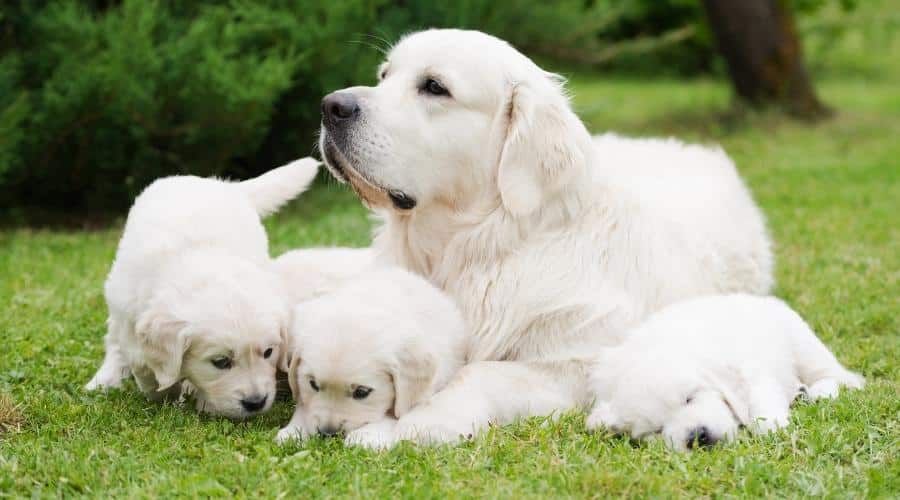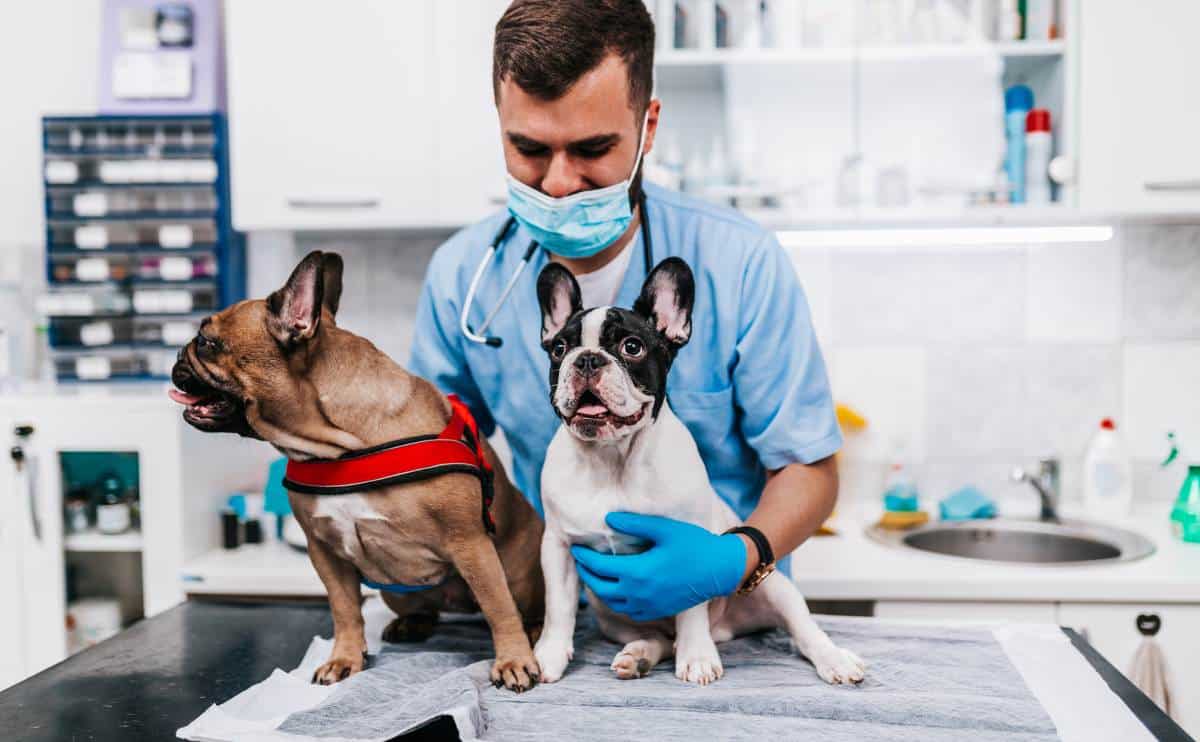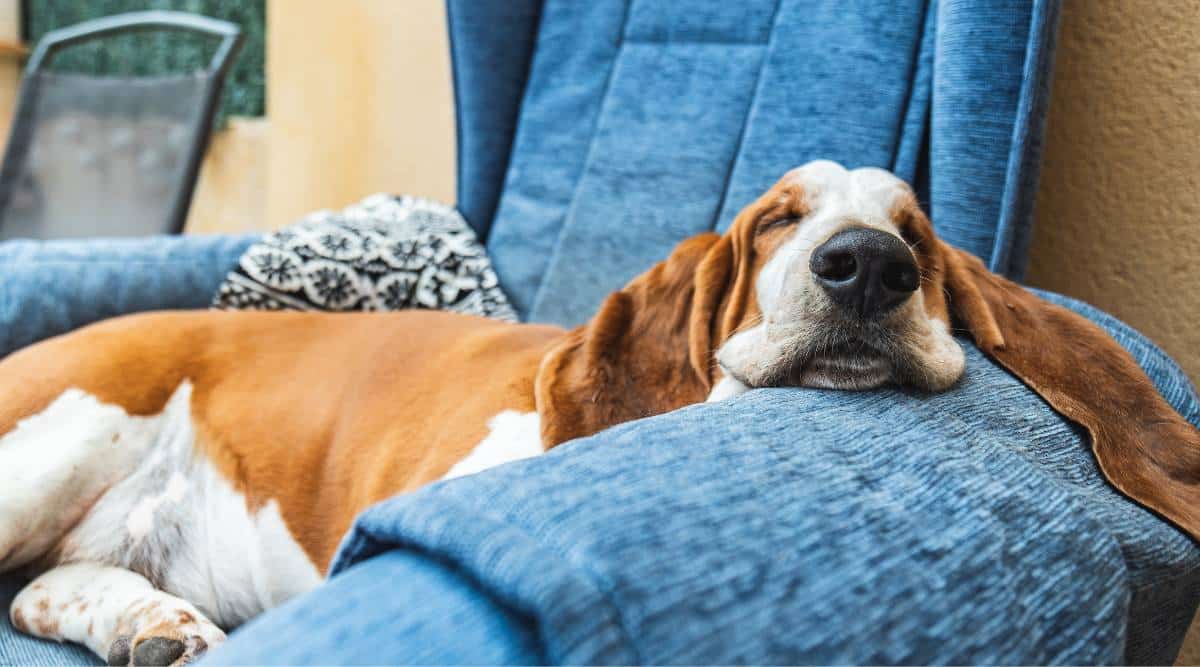Non‑Shedding Dogs: 33 Breeds That Won’t Leave Fur Everywhere
When you purchase through links on our site, we may earn a commission. Here’s how it works.
Are you tired of wearing your dog’s fur like a second sweater or serving it as seasoning for your dinner? If you and your vacuum are on a first-name basis, thanks to endless pet hair, it might be time to consider non-shedding dogs.
Table of Contents
These low-fur legends are a breath of fresh (and sneeze-free) air for allergy sufferers, clean freaks, and anyone who likes their couch the same color it started.
But here’s the hairy truth: not all non-shedding pups are created equal. Some are champion snugglers, and others demand spa-level grooming. So, how do you sniff out the right match for your home? We’ve got you covered with everything you need to know, minus the mess.
Do Truly Non-Shedding Dogs Exist?
Short answer? Not exactly. Despite the hype, no dog is 100% non-shedding. Even so-called “hypoallergenic” breeds still shed to some degree, just a lot less than others.
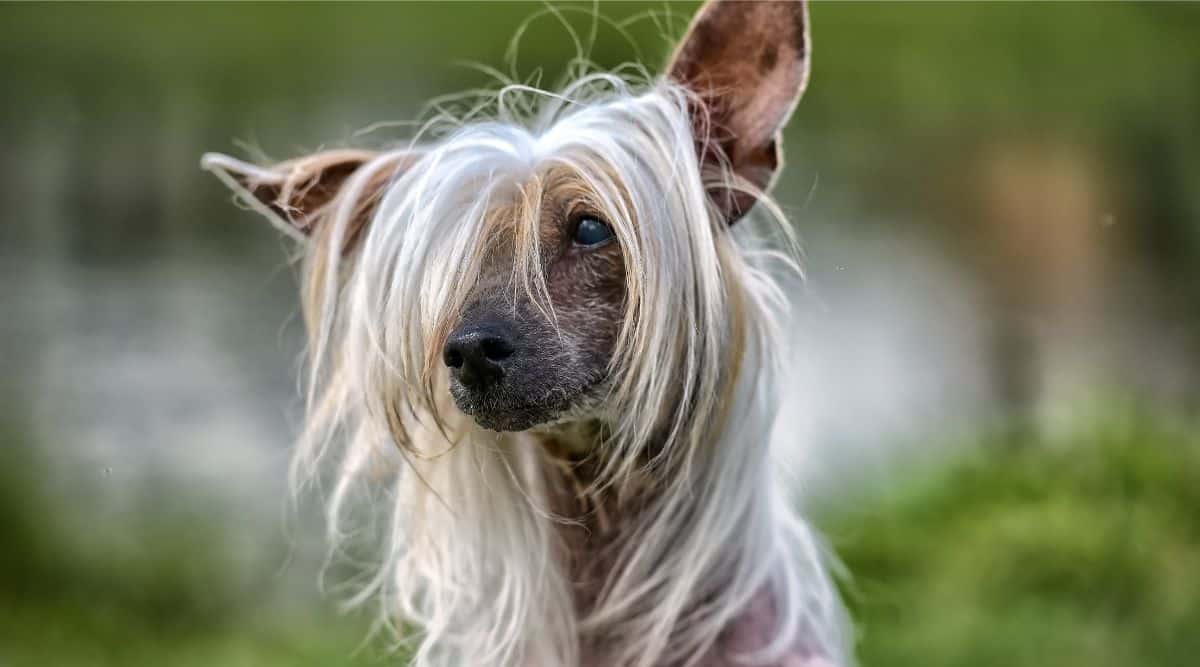
Most of these dogs have hair instead of fur, which means they shed more like humans: slowly, sparingly, and usually into a brush instead of all over your furniture.
The real benefit? Less shedding means less fur cleanup and fewer airborne allergens. That’s why breeds like Poodles, Portuguese Water Dogs, and Bichon Frises are go-to picks for allergy-prone households. But it’s worth noting that less shedding often comes with more grooming. So while your couch may thank you, your grooming tools will still get a workout.
Pro tip: Spend time with a breed before adopting. Everyone’s allergy tolerance is different, and a low-shedding dog for one person might still stir up symptoms in someone else.
Why Do Dogs Shed?
Shedding is one of those facts of life that comes with most furry friends, but why exactly does it happen?
At its core, shedding is a natural process that helps dogs maintain a healthy coat. Much like humans regularly lose strands of hair, dogs shed old or damaged fur to make way for new growth. This renewal keeps their coat functional, shiny, and protective, especially as seasons change or weather conditions shift.

Certain breeds shed more heavily due to their coat type, genetic makeup, and even hormonal cycles. For example, double-coated dogs like Huskies or German Shepherds “blow their coat”—a fancy term for shedding massive amounts of undercoat—typically in spring and fall. Other breeds may shed more modestly throughout the year.
Factors that influence shedding include:
- Breed and genetics (some dogs are just built to shed more)
- Seasonal changes (many dogs shed in spring and fall)
- Hormones (intact females often shed more)
- Diet and overall health
It’s important to know that all dogs with fur will shed to some degree. Even the “low-shedding” breeds lose hair, but it’s just much less noticeable. The only truly non-shedding dogs are hairless breeds, like the American Hairless Terrier or the Xoloitzcuintli, which don’t have fur to lose in the first place.
Understanding why dogs shed not only helps manage your expectations, but it also helps you spot the difference between normal shedding and signs of underlying issues, like poor diet or skin conditions.
How Much Do Dogs Shed?
The short answer: it depends on the dog, the breed, the season, and even what they eat.
Some dogs seem to leave behind a blizzard of fur with every step, while others shed so little you barely notice. Shedding levels vary widely across breeds; even individual dogs within the same breed may shed differently depending on age, health, and environment.
There are generally three types of shedders:
- Heavy shedders (e.g., Labrador Retrievers, German Shepherds) shed large amounts year-round and even more during seasonal coat changes.
- Moderate shedders drop fur in smaller quantities, but still need regular grooming to manage loose hair.
- Low shedders lose minimal fur, often because they have hair rather than fur, or tightly curled coats that trap hair until brushed.
Seasonal shedding is a big deal, especially for double-coated breeds. In the spring and fall, they “blow” their undercoat, releasing clumps of fur in preparation for warmer or cooler temperatures. You’ll notice this most when brushing, vacuuming, or, unfortunately, wearing black clothes.
Shedding can also be influenced by a dog’s nutrition, with poor diets leading to excessive or irregular shedding, and by stress, which may increase hair loss. Other underlying health conditions, such as allergies or thyroid issues, can cause sudden or patchy fur loss.
What “Hypoallergenic” Actually Means
Despite the buzzwords, no dog is completely hypoallergenic or truly non-shedding. The term “hypoallergenic” simply refers to breeds that are less likely to trigger allergic reactions, usually because they shed less and produce fewer allergens like dander, saliva, and urine proteins.
Here’s the catch: the allergens that bother people aren’t in the fur; they’re in the skin, saliva, and urine. When a dog sheds or licks itself, these proteins hitch a ride on hair and dander, spreading through your home.
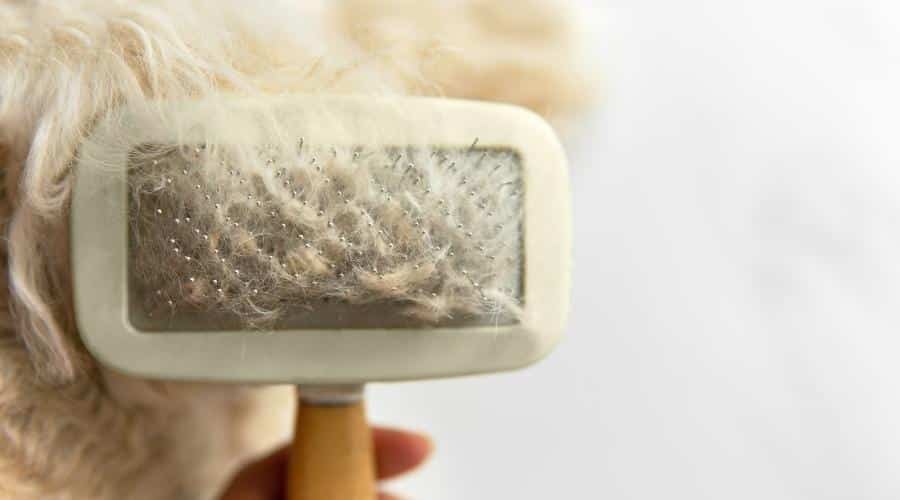
So yes, even so-called “non-shedding dogs” still shed, just in smaller amounts or in ways that are less noticeable. Breeds like Poodles, Maltese, or Bichon Frises may trap shed hair in their curly coats, but that doesn’t make them allergen-free.
Bottom line: If you’re allergy-prone, don’t rely on labels. Spend time with individual dogs before adopting, and combine a low-shedding breed with innovative allergy-management practices like regular grooming, vacuuming, and air filtration.
Meet 7 True Non-Shedding Dogs: The Hairless Heroes
You’ve heard the hype about hypoallergenic and low-shedding dogs, but now it’s time to talk about the real deal. If shedding is your sworn enemy, there’s only one type of dog that can genuinely claim zero fur fallout: the hairless dog.
Think of it like this. Bald guys don’t clog the shower drain. The same logic applies here. These unique breeds don’t shed because they don’t have any hair to shed. That means no tumbleweeds of fur, no dander-coated upholstery, and a lot less sneezing.
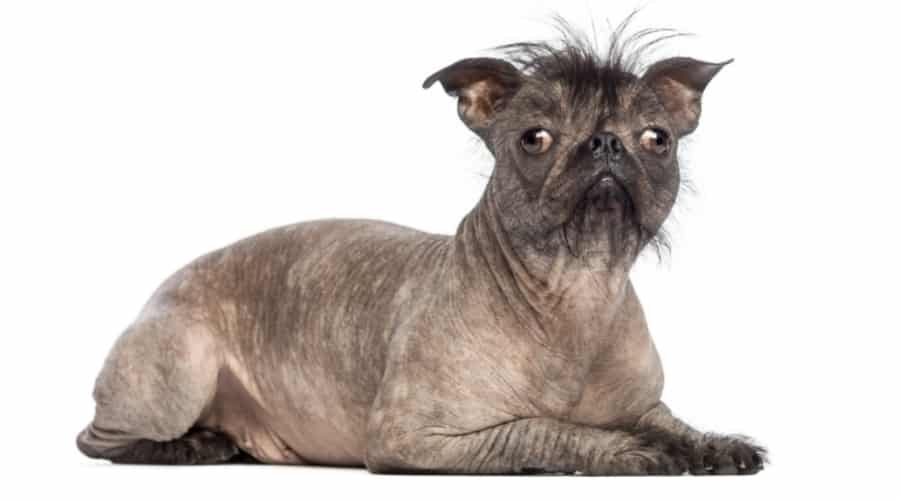
While they may not be everyone’s cup of kibble, hairless dogs are the unsung champions of the truly non-shedding world. In this section, we’ll introduce you to these low-fur legends, from ancient breeds with deep cultural roots to quirky, surprisingly low-maintenance modern companions.
If you’re ready for a no-shed lifestyle with a bold, one-of-a-kind pup, meet your new hairless heroes. These are not listed in any particular order; they are all amazing pups!
1. American Hairless Terrier
If you’ve ever wished for a lively, loyal dog without the mess of shedding, the American Hairless Terrier might be your dream match. These spunky pups are descendants of the Rat Terrier and bring all the terrier tenacity, with none of the fur.
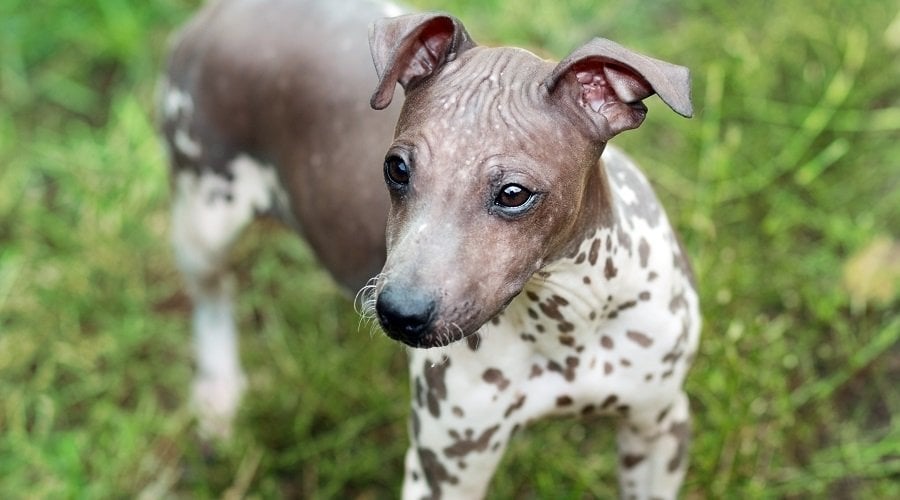
Completely hairless (though there is a coated variety), their smooth skin often comes in eye-catching pink with spots of black, gray, golden, or red. Their alert, upright ears and whip-thin tails give them a sleek, athletic look, and they’re just as energetic as they appear.
They typically stand 7 to 16 inches tall and weigh 5 to 16 pounds, compact enough for small homes, but bold enough to hold their own in a big family.
Best for: Active homes, allergy-sensitive owners, and anyone who loves a curious, clever companion.
2. Chinese Crested (Hairless)
The Chinese Crested is the pop star of hairless dogs, quirky, fabulous, and impossible to ignore. With their trademark “hairstyle” (a fluffy crest on the head, tufts on their feet and tail), they look like they just walked off a fashion runway… or maybe a Tim Burton set.
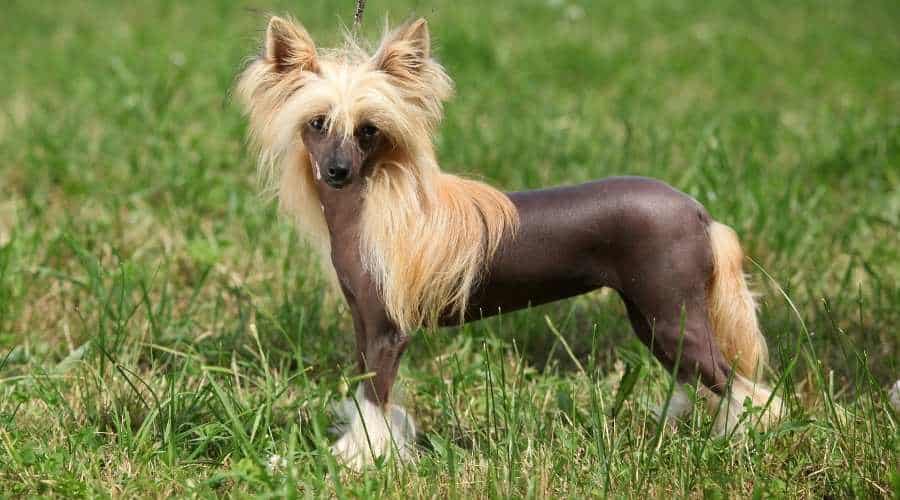
They’re affectionate lap dogs with a mischievous side and thrive on attention. While they’re famously hairless, a “Powderpuff” version exists that’s fully coated, so it’s worth checking if you have allergy concerns.
They grow to about 12 inches tall and usually weigh under 10 pounds, making them ideal for apartments or snuggly laps.
Best for: Stylish dog lovers, introverts who want a devoted shadow, or anyone looking for a small breed with a big personality.
3. Hairless Khala
Elegant and mysterious, the Hairless Khala is a rare gem from South America. These graceful sighthounds have a strong resemblance to the Xolo and Chinese Crested but tend to be more aloof and independent. Their skin is smooth and usually a deep gray, with a short mohawk of hair on the head and possibly the face.
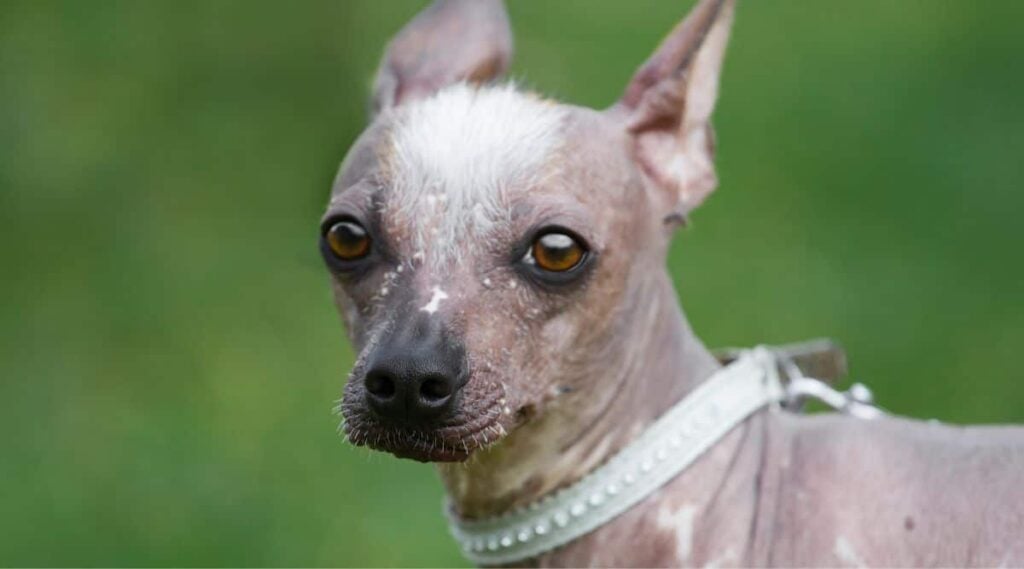
Khalas come in two varieties:
- Medium: 14–17 inches tall, 15–30 pounds
- Large: 17–20 inches tall, 18–30 pounds
They’re built for speed and agility, but also tend to be sensitive, quiet, and loyal once bonded. Early socialization is key, as they can be wary of strangers.
Best for: Experienced dog owners, lovers of rare breeds, and those looking for a sleek, low-shedding companion with a sweet soul.
4. Peruvian Inca Orchid
Known in Peru as “Perro sin Pelo,” this breed is the national treasure you’ve probably never heard of. Graceful and elegant, the Peruvian Inca Orchid can be completely hairless or have a sparse coat, and its skin is often smooth, mottled, and sensitive to sunlight.
They come in multiple sizes but typically stand 20 to 26 inches tall and weigh 26 to 50 pounds. Their large, expressive eyes often squint in bright light, giving them a soulful, wise appearance.
Despite their regal look, they’re affectionate, playful, and alert, though sometimes shy around strangers. With proper socialization, they make devoted family pets.
Best for: Calm households, minimal-shedding fans, and those wanting a unique dog with a rich cultural heritage.
5. Xoloitzcuintli (Xolo)
Meet the OG of hairless dogs, the Xoloitzcuintli, also known as the Mexican Hairless Dog. Revered by ancient Aztecs as spirit guides and healers, Xolos are as rich in history as they are in personality.
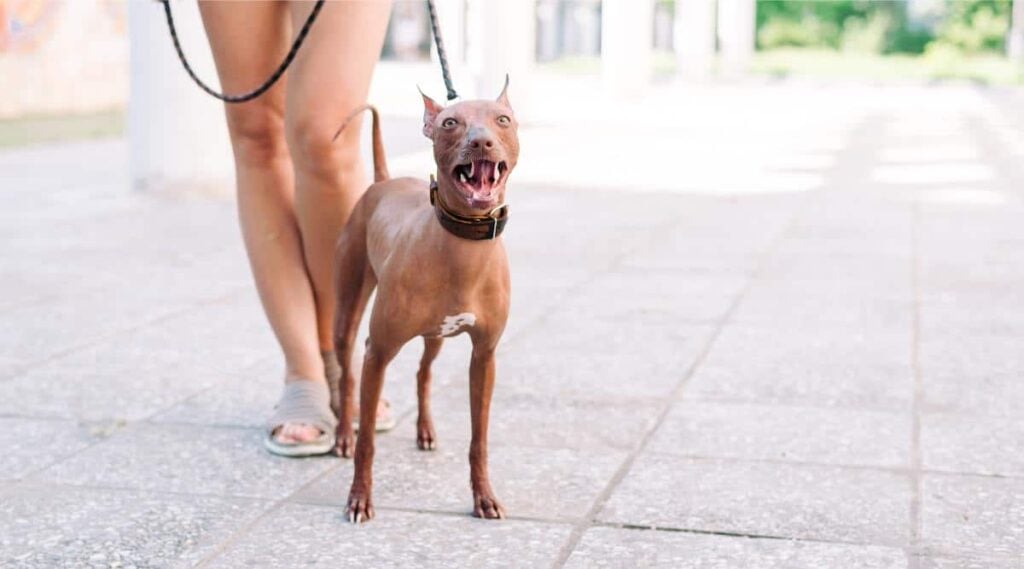
They come in three sizes:
- Toy: 9–14 inches, 5–15 pounds
- Miniature: 15–20 inches, 15–30 pounds
- Standard: 20–30 inches, 25–40 pounds
Their skin can be slate, bronze, red, or spotted, and it often darkens with age. Some may have tufts of hair on the head or tail, adding to their unique charm.
Xolos are calm, affectionate, and incredibly loyal. They’re also known for being emotionally intuitive and are often described as “old souls in dog form.”
Best for: Families looking for a spiritual, hypoallergenic companion, and dog lovers who appreciate both ancient roots and modern elegance.
6. Argentine Pila Dog
The Argentine Pila Dog is a rare and affectionate companion with sleek, smooth skin that feels almost velvety to the touch. Native to Argentina’s northern provinces, this little-known breed is charming, loyal, and surprisingly playful for its size.
Typically small, about 10 to 14 inches tall and weighing 8 to 20 pounds, the Pila is ideal for apartment living or cozy homes. They bond deeply with their families and are known for being gentle with kids and visitors alike.
- Skincare tip: Their skin can get sunburned or dry without fur as a natural barrier. A little sunscreen and moisturizer go a long way.
Best for: Allergy sufferers who want a loving but low-shedding companion, and adventurous owners seeking a unique pet with personality.
7. Hairless Chihuahua
Imagine a Chihuahua with no fur. Welcome to the Hairless Chihuahua, a unique genetic mutation that gives these tiny dogs a sleek, naked appearance. They’re as bold and spirited as their coated cousins but require a bit more skincare attention.
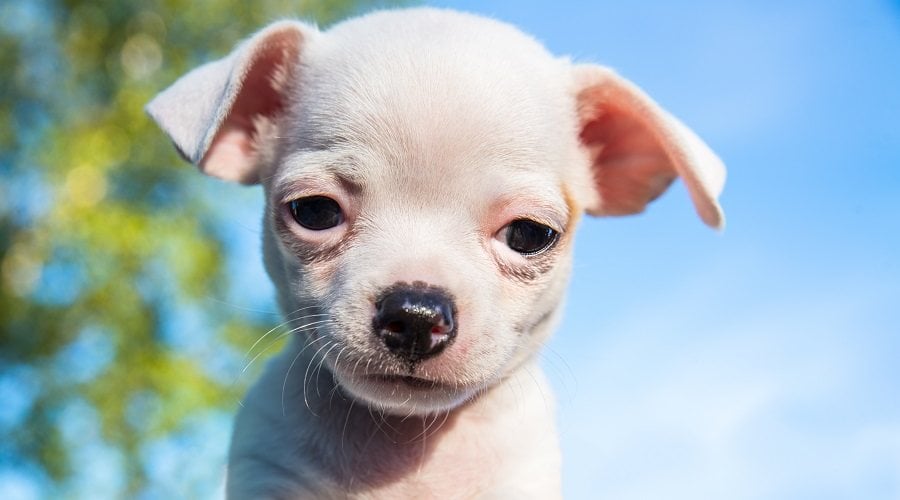
Weighing in at a dainty 3 to 6 pounds and standing 5 to 8 inches tall, they’re tiny yet courageous. Skin care must-haves include gentle bathing, sun protection, and shielding against cold drafts.
Personality-packed: This pup has all the Chihuahua sass, big bark, big attitude, and tiny frame.
Best for: Dedicated owners ready to pamper a special skincare routine and enjoy a loyal, compact companion.
3 Important Things To Remember About Non-Shedding Dogs
If you are considering bringing one of these non-shedding dog breeds into your home, you should consider several things.
- It is crucial to recognize the unique needs of hairless dogs, for example, they easily sunburn when left outside for any period of time and require dog sunblock.
- Conversely, when these dogs are left outside in the cold, they require a dog sweater to maintain their body heat.
- These small dogs also tend to have inherent health problems with skin conditions, in addition to dental conditions. So it is essential to pay particular attention to any skin rashes and to clean your dog’s teeth regularly.
26 Low-Shedding Dog Breeds That Won’t Leave Fur Everywhere
Not ready to commit to a hairless dog but still want to skip the fur-covered furniture? Good news, some dog breeds are naturally low shedders, meaning they drop far less hair than others and are often better suited for allergy-sensitive households.
Unlike hairless dog breeds, these dogs do have coats, but the texture and growth cycle of their hair means it does not fall out as frequently. Many of them have tight curls, dense single coats, or continuously growing hair that needs trimming instead of shedding.
While they are not 100 percent hypoallergenic, these low-shedding breeds are among the best choices for minimizing dander, stray fur, and sneeze-inducing mess.
Coming up, we will walk you through the most popular low-shedding breeds, from charming lapdogs to high-energy companions, so you can find the perfect fit for your lifestyle with a whole lot less fur. We’ve listed these in alphabetical order.
1. Basenji
If silence is golden, the Basenji is pure treasure. Known as the “barkless dog,” this ancient African breed doesn’t bark, but it does yodel, thanks to a uniquely shaped larynx. It’s a quirky, endearing trait that makes them stand out in any pack.
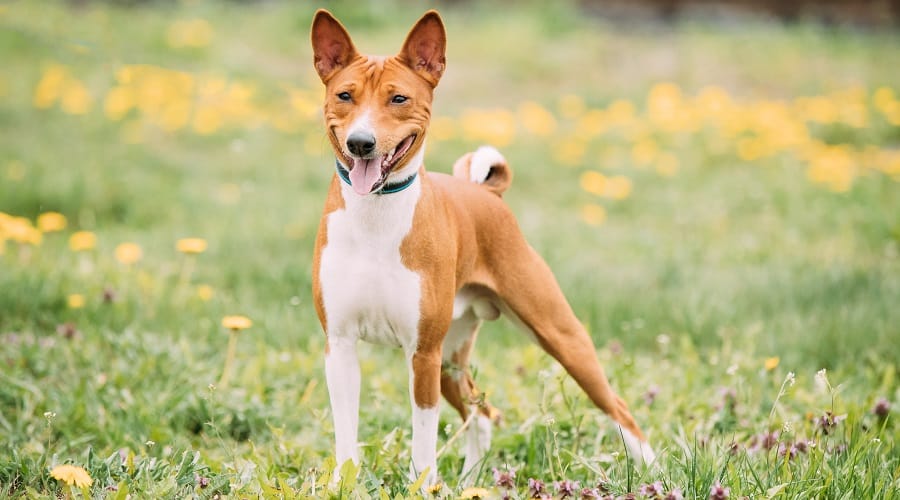
Their short, fine coat barely sheds, and they’re meticulous self-groomers—more like a cat than your average dog. That means less dander, less odor, and very little mess. Basenjis are compact and athletic, standing 15 to 17 inches tall and weighing 20 to 26 pounds.
Independent, intelligent, and fast on their feet, Basenjis need mental stimulation and space to run. They can be aloof with strangers but are deeply loyal to their humans, especially if you’ve earned their respect.
Best for: Owners who want a low-shedding, low-noise dog with a strong personality and sleek style.
2. Bedlington Terrier
At first glance, you might mistake the Bedlington Terrier for a lamb, but don’t let the soft curls and arched back fool you. Under that fleece-like coat is a spirited, athletic terrier with serious grit and surprising speed.
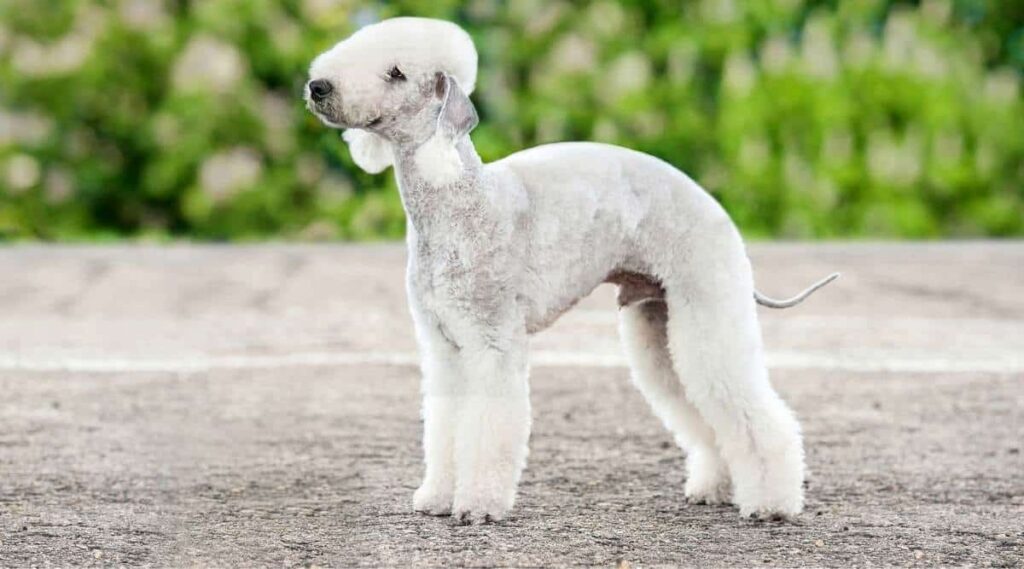
Known for their pear-shaped heads and distinctive lamb-like silhouette, Bedlington Terriers have a thick double coat made of a mix of soft and harsh hair. It barely sheds but does require regular trimming to stay tidy.
Coat colors include blue, sandy, liver, and combinations with tan points. They typically stand 16 to 17 inches tall and weigh 18 to 23 pounds.
Despite their elegant appearance, Bedlingtons are tenacious, lively, and love to play. They’re affectionate with family, friendly with kids, and bold enough to chase anything that moves, making early training and socialization a must.
Best for: Active households looking for a low-shedding dog that’s equal parts graceful and gutsy.
3. Bichon Frisé
This cheerful fluffball looks like a living cotton cloud and acts like a born entertainer. Bichons have a soft, curly coat that doesn’t shed much at all. Instead, it traps hair, reducing the amount that ends up on your floors and furniture.
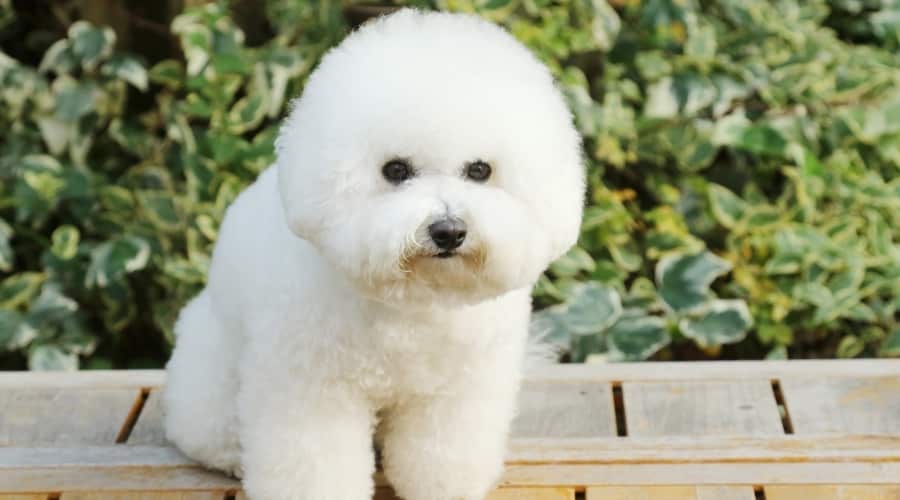
The Bichon Frisé typically stands 9.5 to 11.5 inches tall and weighs between 12 and 18 pounds. Despite their cloud-like appearance, Bichons are sturdy little dogs with cheerful energy and a bounce in their step.
They need regular brushing and professional grooming to keep their signature look, but their friendly nature and low-shedding coat make them a great hypoallergenic option.
Best for: Families, first-time dog owners, and anyone who wants a lovable dog with a clean reputation.
4. Brussels Griffon
Equal parts Ewok and aristocrat, the Brussels Griffon is a toy breed with a larger-than-life attitude and a face that begs to be meme’d. Don’t let the mustached mug fool you, this little dog takes loyalty seriously and will shadow you from sofa to shower.
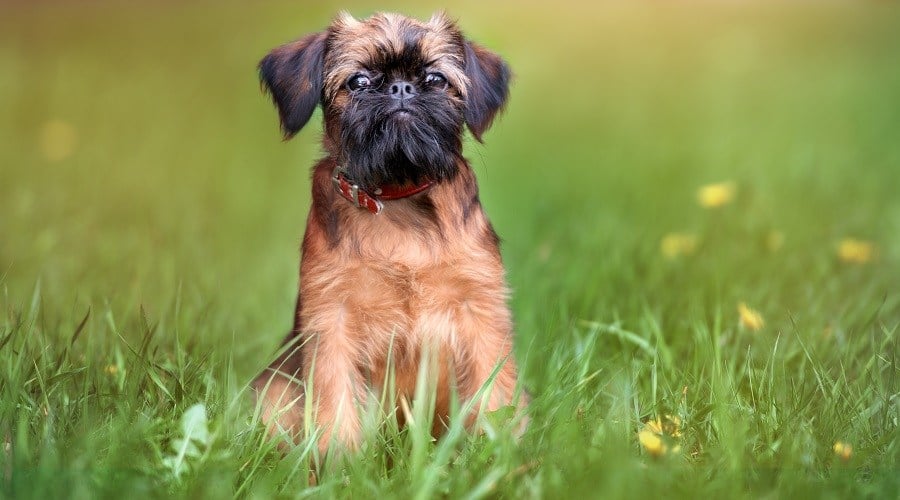
Brussels Griffons come in two coat types: smooth and rough. Both shed very little, but the rough coat requires regular brushing to prevent tangles. Colors include red, black, black and tan, and belge (a mix of red and black). They stand a petite 7 to 8 inches tall and weigh just 6 to 12 pounds.
Griffs are intelligent, sensitive, and sometimes a bit bossy. They respond best to positive reinforcement and can develop “small dog syndrome” if not given clear boundaries. Their expressive eyes and human-like gaze make them endearing, and a little hard to say no to.
Best for: Apartment dwellers or homebodies looking for a devoted, low-shedding companion with personality for days.
5. Dandie Dinmont Terrier
Quirky name, unforgettable look, the Dandie Dinmont Terrier is a long-bodied, low-set dog with a big personality packed into a small frame. Known for their iconic topknot of soft hair and soulful eyes, Dandies blend charm, courage, and a whole lot of character.
Their coat is a unique mix of soft and harsh textures, shedding very little and requiring moderate grooming. Dandies come in two classic shades: “pepper” (blue-black to silvery gray) and “mustard” (reddish brown to pale fawn). They stand about 8 to 11 inches tall and weigh 18 to 24 pounds.
These terriers are intelligent and calm indoors but full of spunk outside. While friendly and affectionate with their people, they still have the strong prey drive of a true terrier, so small pets should beware.
Best for: Dog lovers seeking a rare, low-shedding breed with a mix of elegance, humor, and old-school grit.
6. Coton de Tulear
Hailing from Madagascar, the Coton de Tulear is as charming as it is fluffy. Their cotton-like coat is surprisingly low-shedding and doesn’t leave hair all over the house, but it does need frequent brushing to stay tangle-free.
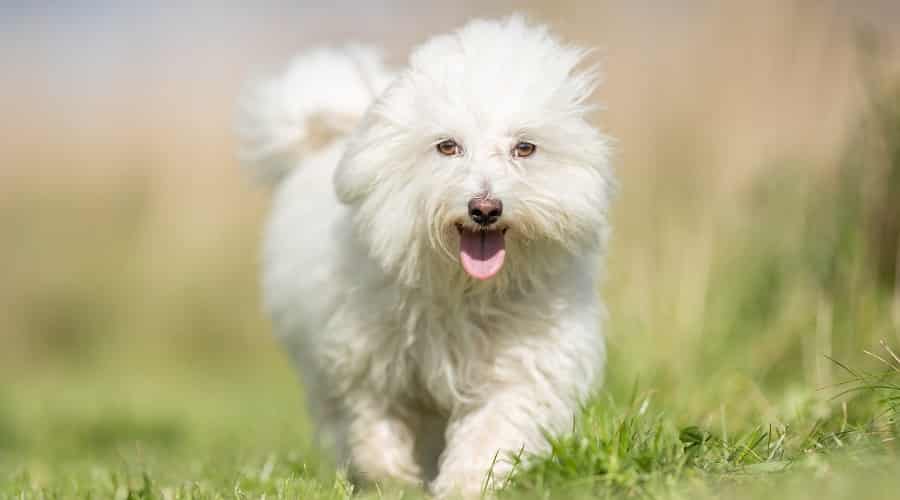
The Coton de Tulear typically stands 9 to 11 inches tall and weighs between 8 and 15 pounds. Compact but sturdy, they’re small enough for your lap yet solid enough to keep up on a brisk walk.
Cotons are affectionate, clownish, and deeply devoted to their families, making them a perfect cuddle companion for allergy-prone households.
Best for: Families and singles who want a rare, sweet-natured dog that’s easy on the sinuses.
7. Havanese
The Havanese may be small, but this little Cuban companion is bursting with personality, charm, and silky-smooth style. Known as the national dog of Cuba, this breed was once the lapdog of aristocrats, and it hasn’t forgotten its royal roots.

The Havanese’s long, flowing coat looks high-maintenance, but surprisingly, it sheds very little. The coat can be wavy, curly, or even corded and comes in nearly every color imaginable, from gold and cream to chocolate, silver, and tricolor blends.
Havanese typically stand 8 to 11 inches tall and weigh 7 to 13 pounds. They’re compact enough to fit in a tote, but sturdy enough to keep up with daily playtime or walks around the block.
Smart, social, and eager to please, Havanese dogs excel in obedience and thrive on human interaction. They’re equally content being your cuddle buddy or your shadow during a Zoom call.
Best for: Allergy-conscious owners who want a cheerful, adaptable dog with a lush, low-shedding coat.
8. Irish Terrier
Fiery in coat and in spirit, the Irish Terrier is as bold as it is beautiful. With its wiry red coat and fearless attitude, this breed has long been a symbol of loyalty and courage, and it backs that up with real working grit.
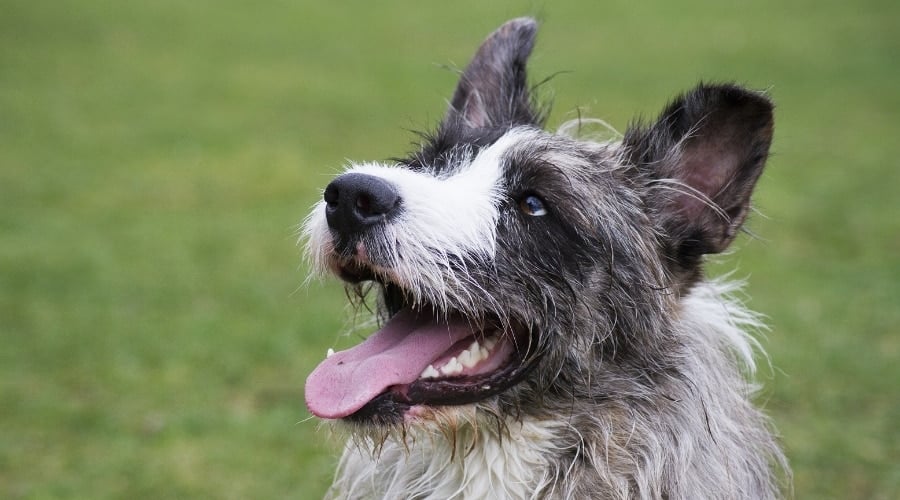
Its dense, harsh outer coat sits close to the body and sheds very little. Beneath that is a softer undercoat, giving the dog a rugged but refined appearance. Colors range from wheaten to bright red to golden red.
The Irish Terrier stands about 18 inches tall and weighs 25 to 27 pounds, offering a compact yet athletic build that’s always up for adventure.
Brave, intelligent, and deeply devoted to family, the Irish Terrier thrives under clear leadership. They do best with confident owners who can match their energy and don’t mind a little terrier stubbornness now and then.
Best for: Active owners who want a loyal, low-shedding companion with true Irish spirit.
9. Italian Greyhound
Sleek, sensitive, and endlessly elegant, the Italian Greyhound is the runway model of the dog world. With its slender frame, long legs, and graceful gait, this breed brings refinement to any home without leaving a trail of fur behind.
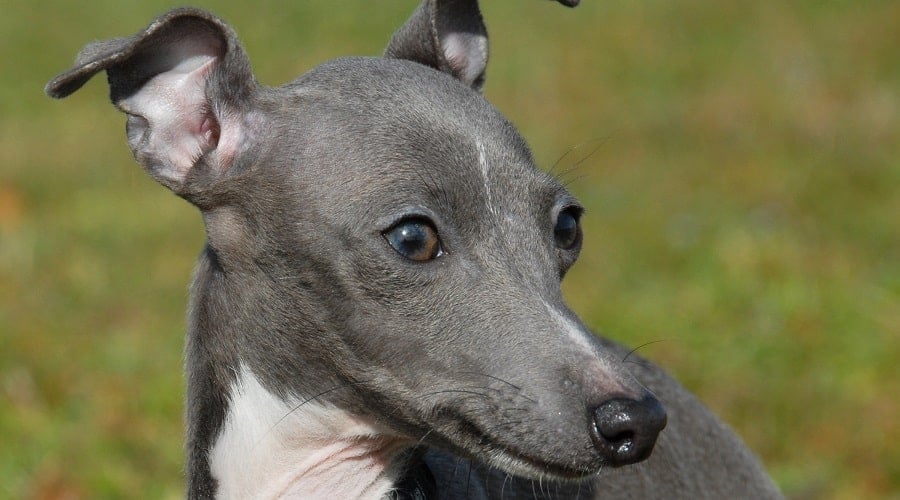
Italian Greyhounds have short, fine coats that shed very little and require almost no grooming. Coat colors span a wide range, including gray, fawn, black, red, blue, white, or combinations of these. Their skin is delicate, so gentle handling and sun protection are key.
This breed typically stands 12 to 15 inches tall and weighs 6 to 10 pounds. Despite their size, they’re surprisingly athletic and can zoom around the yard like miniature racehorses.
They’re affectionate, intuitive, and form deep bonds with their humans. But their delicate build and sensitivity mean they’re best suited to calm households without roughhousing young kids.
Best for: Gentle, attentive owners looking for a graceful, low-shedding lapdog with a touch of nobility.
10. Kerry Blue Terrier
Originally bred in Ireland as a jack-of-all-trades farm dog, the Kerry Blue Terrier is known for its striking blue-gray coat and spirited personality. Their dense, soft, wavy coat sheds very little, making them a solid pick for allergy-sensitive homes, but they do need regular trimming and maintenance.
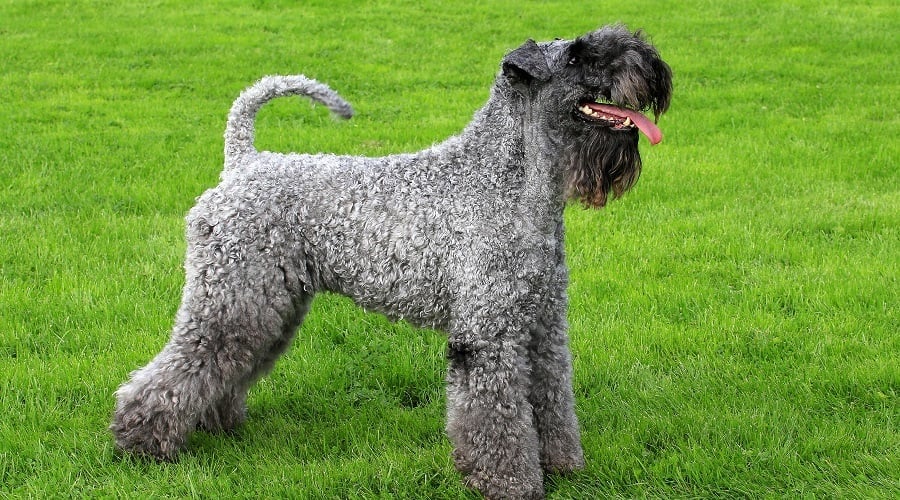
These dogs stand 17.5 to 20 inches tall and weigh 33 to 40 pounds. They’re athletic, affectionate, and fiercely loyal. While intelligent and eager to please, they can be strong-willed and benefit from firm, positive training and early socialization.
Best for: Experienced owners looking for a sharp, stylish, low-shedding terrier with a bold heart.
11. Komondor
The Komondor isn’t just a dog, it’s a walking mop with a mission. Known for its iconic corded coat, this Hungarian breed was developed to guard livestock, and its thick white cords offer both camouflage and protection from the elements.
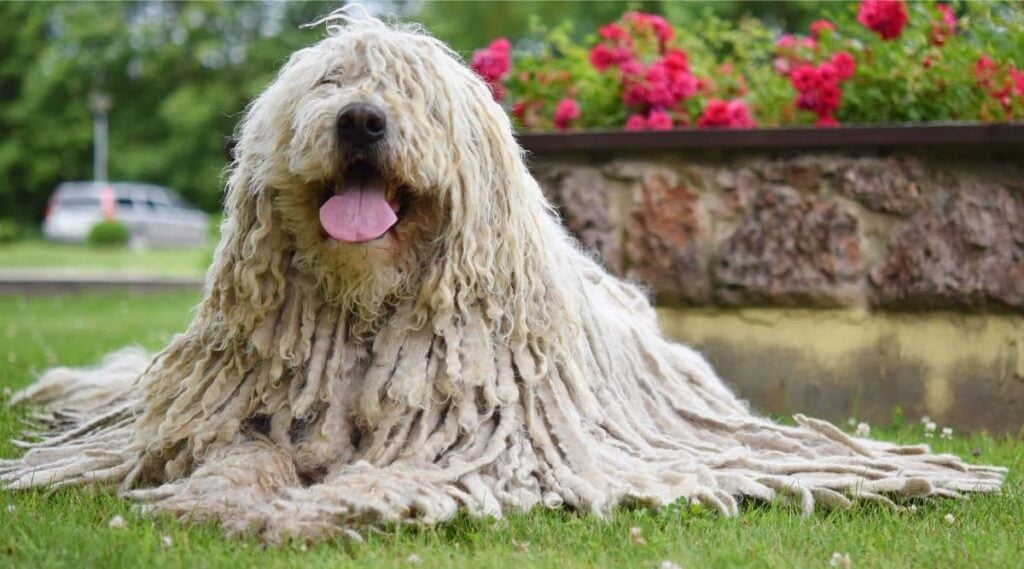
Despite their massive size, standing over 25.5 inches tall and weighing up to 125 pounds, Komondors shed very little. Their cords trap hair and dander, but that also means grooming is essential to prevent matting.
Strong-willed and protective, Komondors are calm indoors but natural guardians outdoors. Early socialization and firm leadership are a must for a well-adjusted companion.
Best for: Rural homes with space, experienced handlers, and a deep appreciation for unique grooming.
12. Labradoodle
Originally developed as a hypoallergenic service dog, the Labradoodle blends the Labrador Retriever’s friendliness with the Poodle’s low-shedding coat. Depending on their genetics, their coats can range from wiry to fleece-like, with some shedding more than others.

Labradoodles vary widely in size, ranging from 15 to 65 pounds, based on whether they’re bred from toy, miniature, or standard Poodles. They’re social, energetic, and easy to train, making them a favorite for families and first-time dog owners alike.
While not technically non-shedding, well-bred Labradoodles with curly or wavy coats tend to be more allergy-friendly and require regular grooming to keep their coats healthy and mat-free.
Best for: Families and allergy-sensitive households looking for a playful, intelligent, and affectionate companion.
13. Lakeland Terrier
Feisty and fearless, the Lakeland Terrier sports a durable double coat, soft underneath, wiry on the outside, that resists shedding and requires minimal brushing.
These compact athletes stand around 14.5 inches and weigh 15 to 17 pounds. They’re adventurous and ideal for homes with kids, though their keen prey drive means no small pets.
Best for: Active families or terrier lovers wanting a lively, low-fur buddy with character.
14. Löwchen
The Löwchen, or “Little Lion Dog,” might not roar, but it will definitely steal hearts. With a flowing coat that grows instead of sheds, this French breed is both regal and allergy-friendly.
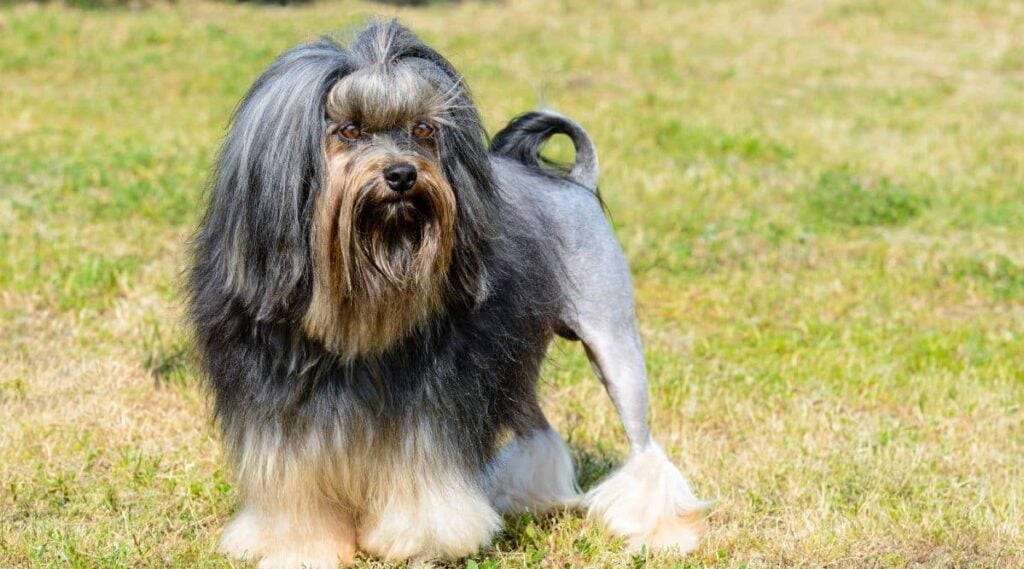
Löwchens are friendly, outgoing, and surprisingly sturdy for a toy-sized dog. They thrive in both active homes and quiet spaces, as long as they’re the center of attention.
Best for: Dog lovers who want something rare, low-shedding, and full of charm.
15. Maltese
The Maltese is tiny, elegant, and wrapped in a coat of silky white hair that barely sheds. Don’t be fooled by the glamour; under that luxurious look is a bold and playful pup with tons of heart. Despite their delicate appearance, they’re spunky, confident, and perfect for lap life.
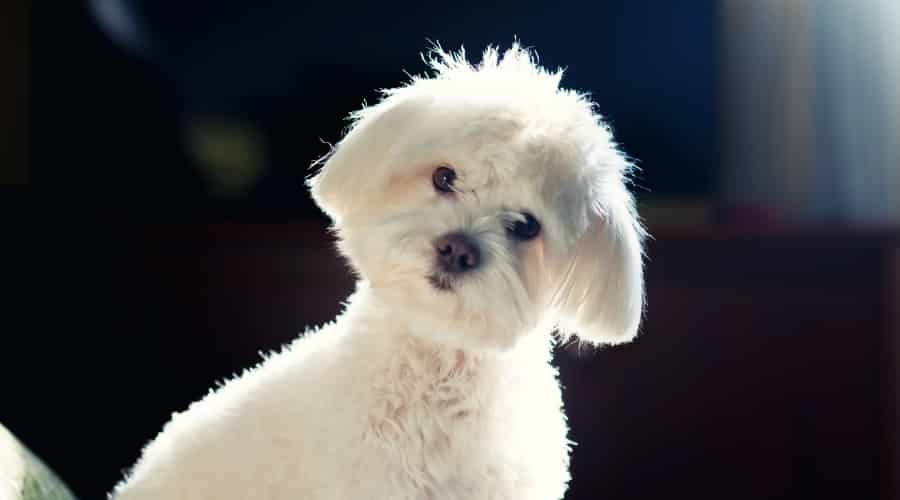
Because their hair grows continuously like human hair, regular grooming is essential, but stray fur around your home is practically nonexistent.
Best for: Small-space dwellers, allergy-sensitive owners, and anyone who loves a lapdog with a lively personality.
16. Manchester Terrier
Sharp, sleek, and always dapper, the Manchester Terrier features a striking black-and-tan coat that sheds minimally and highlights their athletic build.
Toy types are 10 to 12 inches and 6 to 8 pounds, while standard types grow to 15 to 16 inches and about 18 pounds. They’re alert, loyal, and ready for action.
Best for: Active city dwellers who want a compact, fast-moving, low-shedding companion.
17. Miniature Schnauzer
With bushy eyebrows, a distinguished beard, and a wiry coat that sheds very little, the Mini Schnauzer brings bold charm and minimal mess. Their fur grows slowly and tends to stay put, meaning less cleaning for you.
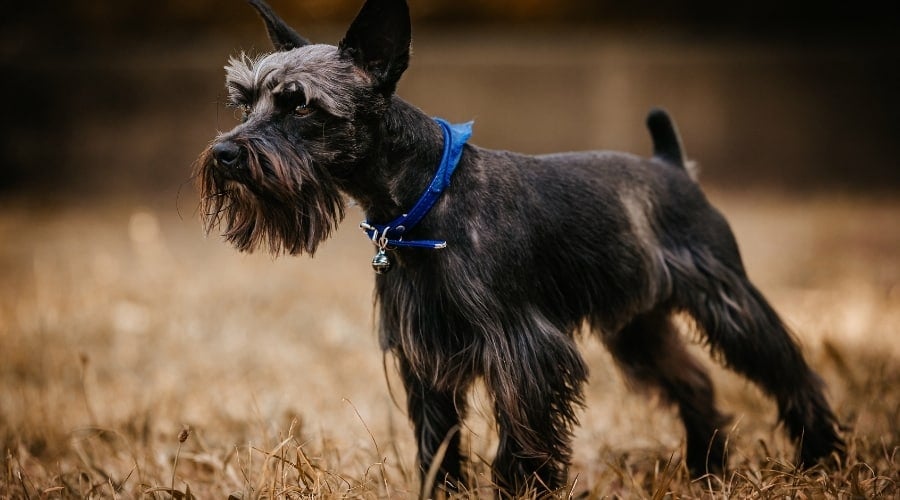
They’re intelligent, loyal, and full of personality, making them a great match for active households. Just be ready for regular trimming and brushing to keep their eyebrows and beard looking fresh.
Best for: Allergy-conscious owners who want a bright, spirited, and low-mess dog.
18. Poodle (Toy, Miniature, Standard)
Smart, stylish, and impressively low-shedding, Poodles are beloved for their hypoallergenic coats and unmatched intelligence. Their curly fur traps hair and dander rather than releasing it into the environment, making them one of the best options for allergy sufferers.

Poodles come in three sizes: Toy (up to 10 inches and 6 to 9 pounds), Miniature (11 to 15 inches and 15 to 17 pounds), and Standard (over 15 inches tall and 45 to 70 pounds). Despite their reputation for fancy grooming, they’re athletic, highly trainable, and make excellent companions for everything from agility to therapy work.
Their low-shedding coat does require regular grooming to prevent mats and keep curls clean. But in return, you’ll get a loyal, adaptable dog that thrives on human interaction and loves to learn new tricks.
Best for: Allergy-prone owners who want an intelligent, affectionate dog with a clean, classic look.
19. Portuguese Water Dog
Originally bred to assist fishermen along the coast of Portugal, the Portuguese Water Dog is a high-energy, water-loving companion with a low-shedding, curly or wavy coat. Their thick fur is single-layered, meaning less dander and fewer allergens floating through your home.
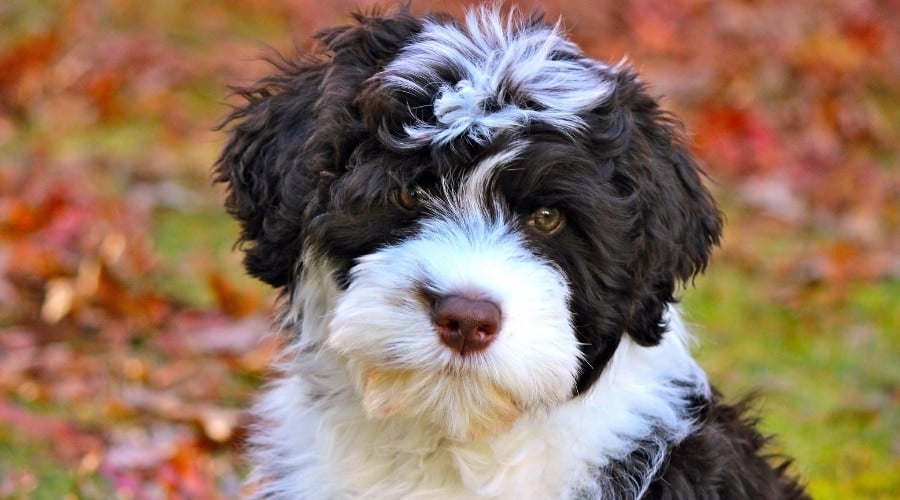
These athletic dogs stand 17 to 22 inches tall and weigh between 35 and 55 pounds. Agile, loyal, and eager to work, they’re excellent swimmers and thrive in active households where they have a job to do—or at least plenty of playtime.
Though their coats don’t shed much, they do need regular grooming to prevent matting, especially if kept in a longer style. Their intelligence and loyalty make them excellent companions for families, athletes, and even therapy work.
Best for: Energetic families or outdoorsy owners looking for a hypoallergenic dog that can keep up with an adventurous lifestyle.
20. Puli
The Puli isn’t just a dog, it’s a woolly wonder. This Hungarian herding breed is known for its naturally corded coat that looks like dreadlocks. And while it might seem high-maintenance, the good news is it sheds very little. In fact, most hair stays locked in the cords, making this breed an excellent choice for allergy-conscious homes.
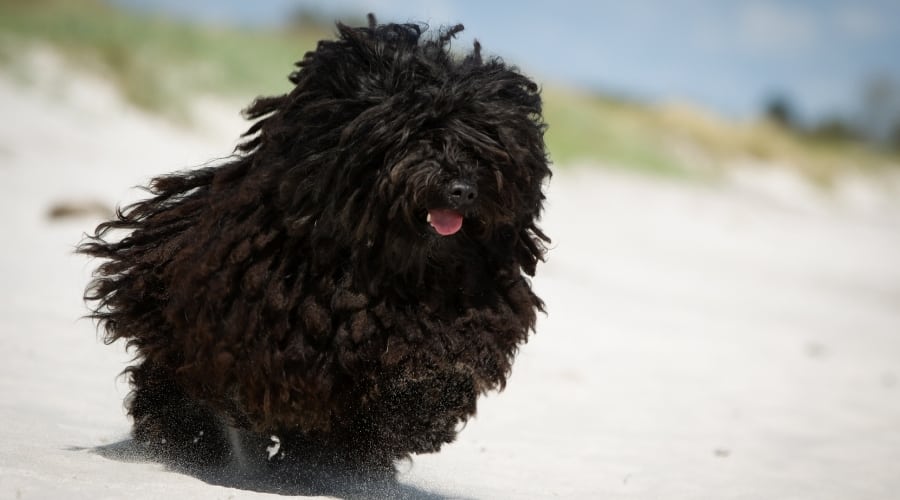
Pulis typically stand 14.5 to 17.5 inches tall and weigh 20 to 35 pounds. Agile and quick on their feet, they were bred for herding sheep, and they still have the energy and intelligence to match. They’re independent but loyal, and they thrive in environments where they can stay active, mentally and physically.
Their iconic cords begin forming around six months of age and require occasional separation to avoid matting. While they don’t need traditional brushing, their unique coat calls for commitment and regular upkeep.
Best for: Active, experienced dog owners who appreciate a one-of-a-kind look and an alert, energetic companion with minimal shedding.
21. Scottish Terrier
Dignified, independent, and unmistakably iconic, the Scottish Terrier—or “Scottie”—brings old-school charm with a coat that keeps shedding to a minimum. Their wiry outer coat and dense undercoat trap hair, making this breed a favorite for allergy-sensitive owners who love a bold personality in a compact frame.

Scotties typically grow to 10 to 11 inches tall and weigh between 19 and 23 pounds. Known for their confident demeanor and serious expression, these dogs are surprisingly affectionate with their families and often form strong bonds with one person in particular.
While they’re independent thinkers, Scottish Terriers respond well to calm, consistent training. They also thrive on routine and enjoy short bursts of play or walks, then they’re back to their favorite perch, watching the world with quiet intensity.
Best for: Singles or couples who appreciate a loyal, low-shedding dog with a classic terrier attitude and a low-key lifestyle.
22. Shih‑Tzu
Regal and affectionate, the Shih‑Tzu looks like royalty with its flowing double coat, but this breed sheds very little when brushed regularly. Their luxurious locks require daily grooming, but they won’t leave tumbleweeds of hair in your home.
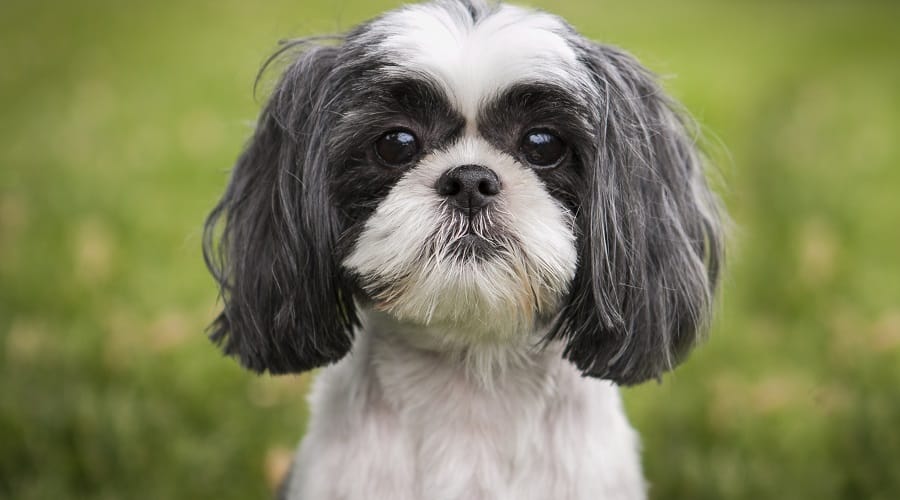
Shih‑Tzus grow up to 11 inches and weigh 9 to 16 pounds. They’re playful and sociable, with a friendly demeanor that suits families, seniors, and city dwellers alike.
Known for their resilience despite their delicate appearance, Shih‑Tzus are good-natured and adapt well to apartment life. Consistent training and early socialization help prevent the strong-willed traits that can pop up if they’re spoiled.
Best for: Buyers seeking a hypoallergenic lap dog with a touch of elegance and minimal shedding.
23. Soft‑Coated Wheaten Terrier
With a tousled, wave-like coat that never stops growing, the Wheaten Terrier is low-shedding and delightfully soft to the touch. Their single-layer coat sheds minimally and continues growing, so there’s no seasonal shedding frenzy.
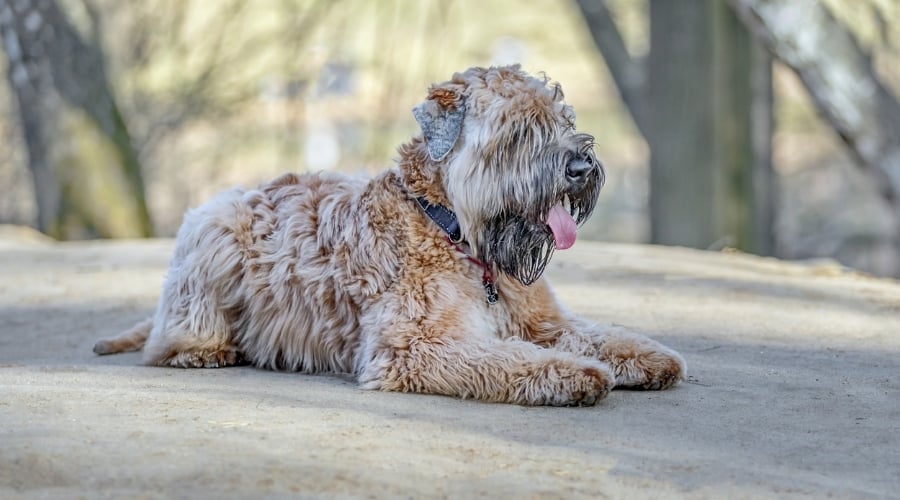
They stand about 17 to 19 inches and weigh 30 to 40 pounds. Energetic and friendly, Wheatens are excellent family dogs that get along well with children and other pets.
Though their coat needs regular brushing to prevent mats, they reward you with constant companionship, playful energy, and a loyal heart.
Best for: Active families who want a sociable, low-fur dog with farm-dog energy and a soft touch.
24. Spanish Water Dog
Dense, curly, and built for water, the Spanish Water Dog is a working breed with a coat that sheds very little. Their fleece-like fur naturally resists tangles and traps shed hair, making them an allergy-friendlier choice.
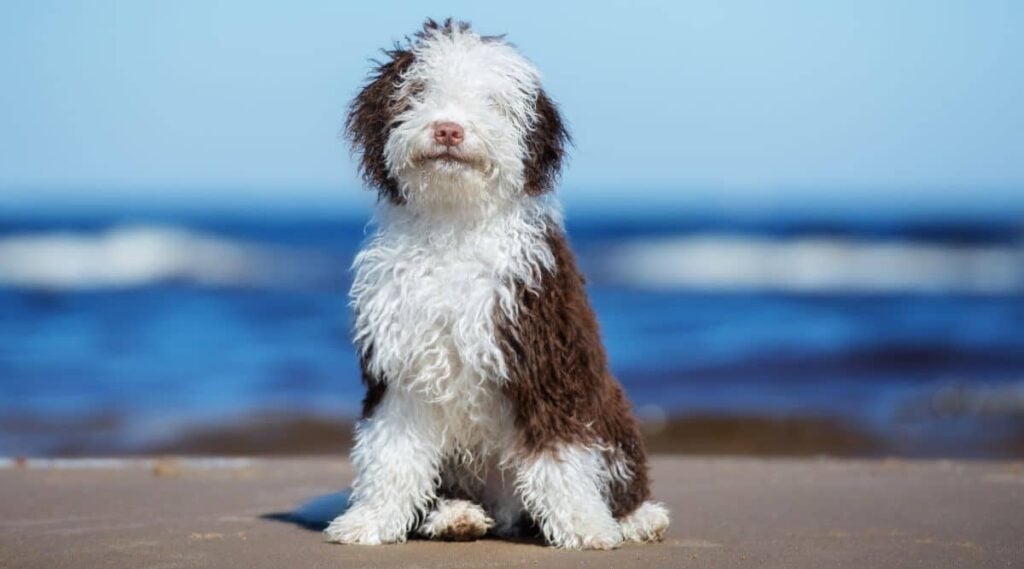
These dogs are typically 16 to 20 inches tall and weigh 30 to 49 pounds. They are intelligent, confident, and versatile, adept at retrieving, herding, search tasks, and activities around water.
Their coat forms either corkscrew curls or corded plugs if left natural. Minimal grooming is needed to maintain health, and they thrive with regular mental and physical challenges.
Best for: Outdoorsy owners who want a hypoallergenic companion that performs—and looks—exceptionally in water or agility activities.
25. West Highland White Terrier
Bright, bold, and always white, the “Westie” sports a crisp, double-layered coat that sheds lightly and maintains its iconic look. Their coarse outer coat and dense undercoat hold onto loose hair, minimizing indoor mess.
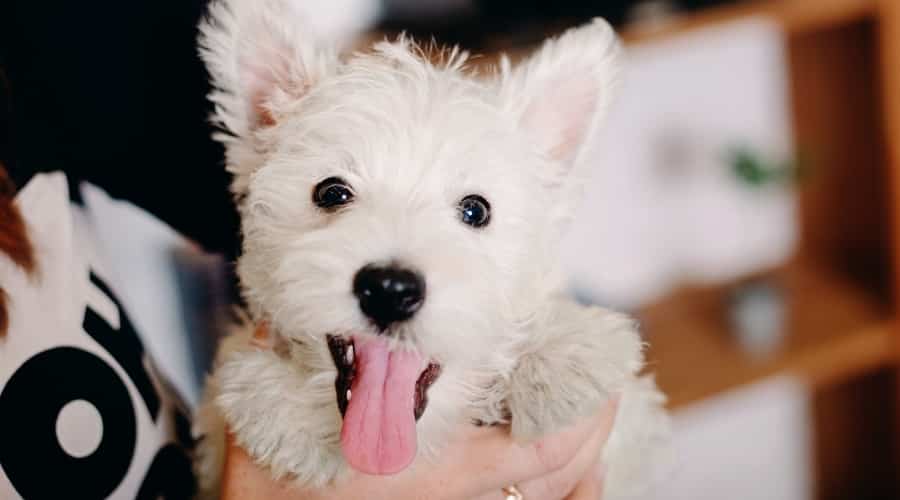
They stand around 9 to 12 inches and weigh 13 to 22 pounds. Energetic and social, Westies make playful family dogs and adapt well to apartment or suburban life.
These terriers are spirited, confident, and enjoy outdoor adventures—or simply lounging on a comfy couch. Their grooming needs are modest but benefit from periodic hand stripping to maintain coat texture.
Best for: Owners wanting a cheerful, low-shedding terrier that loves both walks and cuddle sessions.
26. Yorkshire Terrier
Elegance in miniature form, the Yorkshire Terrier wears a sleek, silky coat that falls like human hair, meaning it sheds very little when properly maintained. They’re stylish, bold, and full of spunk.

Yorkies typically stand 6 to 7 inches tall and weigh around 7 pounds. Despite their tiny size, they have a big-dog attitude and are deeply devoted to their owners.
Their fine coat requires regular brushing and occasional trimming, but the payoff is a clean home and a companion who thinks they’re ten times their size.
Best for: Allergy-conscious owners seeking a compact companion with elegance, attitude, and minimal fur.
5 Grooming Tips for Low-Shedding and Non-Shedding Dogs
Even low-shedding and non-shedding dogs need regular upkeep to stay clean, healthy, and mat-free. Here’s how to keep your pup (and your furniture) looking their best:
- Brush regularly: Just because they don’t shed much doesn’t mean they don’t tangle. Aim for 2–3 times a week, or daily for long-haired breeds.
- Bathe wisely: Overbathing can dry out the skin. Stick to once every 4–6 weeks unless your dog’s gotten into something gross.
- Use the right tools: Choose grooming brushes that match your dog’s coat type—slicker brushes, combs, or even grooming gloves.
- Check ears and paws: Low-shedding breeds often have hair that grows in ear canals and between paw pads. Keep those trimmed to prevent buildup.
- Don’t skip the pros: Schedule professional grooming every 6–8 weeks to maintain coat health and handle tricky spots like nails and sanitary trims.
Learn more about the best deshedding brushes and tools, which greatly help manage shedding.
What Causes Unhealthy Shedding? 3 Triggers to Watch For
While some shedding is completely normal, excessive or patchy hair loss can signal a deeper issue. Unhealthy shedding often means there’s an underlying health problem, and early detection can make a big difference in your dog’s comfort and care.
1. Mange
Mange is a skin condition caused by microscopic mites. These parasites burrow into your dog’s skin, causing severe itching, inflammation, and significant hair loss.
- Patchy bald spots
- Red, irritated, or inflamed skin
- Constant scratching or biting
- Scabs or visible sores
Unlike regular shedding, mange causes hair to fall out in irregular spots, often leaving behind raw, scaly patches.
2. Poor Nutrition
Nutrition plays a critical role in your dog’s coat health. If your dog’s diet lacks key nutrients or cannot absorb them, their fur and skin can suffer.
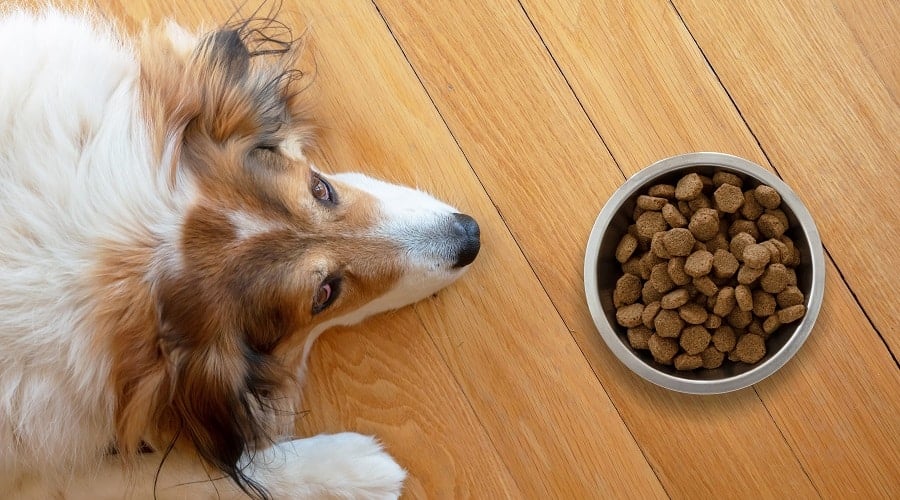
Common causes of poor nutrition include:
- Feeding low-quality commercial food
- Food allergies or intolerances
- Underfeeding or feeding human food
- Insufficient protein, healthy fats, or essential vitamins
Signs of nutrition-related shedding may include:
- All-over hair loss (not in patches)
- Dull or dry coat
- Flaky, itchy skin
- Frequent licking or scratching
Make sure your dog is eating a high-quality, balanced diet suited to their breed, age, and size. Check out how much to feed your dog or browse our recommendations for fresh and natural dog food. We also have guidance if you want to try making your own homemade dog food. There are also options for dog food that boost skin health and help with shedding.
3. Skin Conditions and Allergies
Dogs can develop a range of skin conditions—from hot spots and skin allergies to fungal infections—that trigger hair loss. These often appear suddenly and may affect small areas or spread across the body.
- Localized or widespread hair loss
- Redness, swelling, or rash
- Open sores or weeping wounds
- Persistent licking or chewing in specific areas
If your dog is losing fur and showing signs of skin irritation, it’s worth investigating further. Learn more about common dog skin conditions and treatments. It’s a good idea to check in with your vet if you have concerns about your dog’s skin and coat health.
Picking the Right Non-Shedding or Low-Shedding Dog for Your Family
Bringing a dog into your home isn’t just a cute idea—it’s a long-term commitment. Dogs need time, training, vet care, healthy food, and yes, regular grooming. If you’re looking for a non-shedding or low-shedding breed, you’re already thinking ahead when it comes to managing the fur factor.
But let’s set expectations: even so-called non-shedding dogs leave their mark—think muddy paw prints, the occasional drool spot, and bathroom duty. And if you’re choosing a dog because of allergies, the research phase is even more critical.
Here’s what matters:
Before you bring a new pup home, spend time with the breed. Visit breeders or rescues, learn about grooming needs, and see how your body reacts. Returning a dog because of allergies is more common than you’d think, and always heartbreaking. A little homework now can save a lot of heartache later.
Ready to Find the Right Fit?
Choosing low-shedding or non-shedding dogs is an excellent step toward a cleaner home and easier breathing. But the right dog is about more than fur; it’s about finding a companion that fits your lifestyle. Do the research, meet the breed, and set yourself (and your new best friend) up for success.
Need help choosing the best dog breed for your family? Start with our breakdown of the best dog breeds for allergy sufferers. And if you’ve already got a furry companion, our expert dog grooming guide can help keep them (and your home) looking their best. We’d also love to hear your stories about the non-shedding dogs and low-shedding breeds you love in the comments below!
